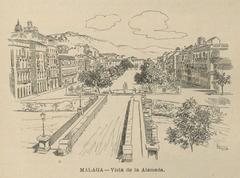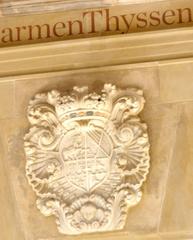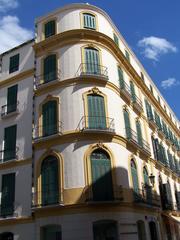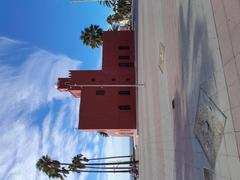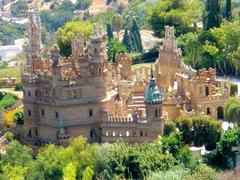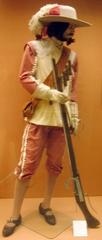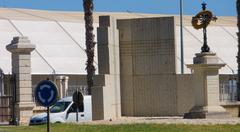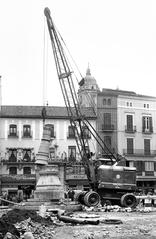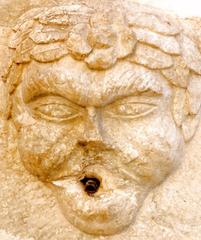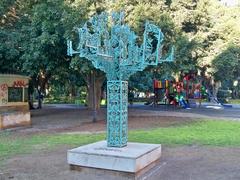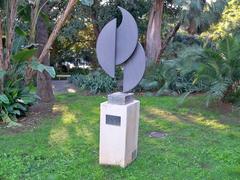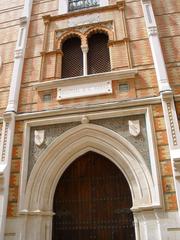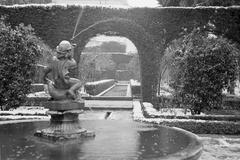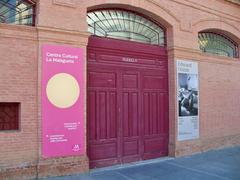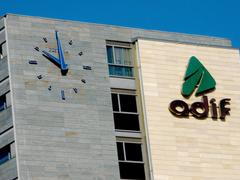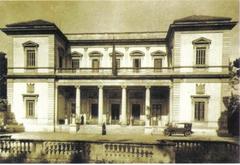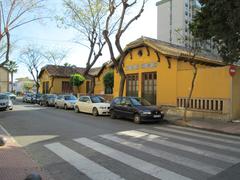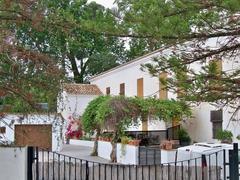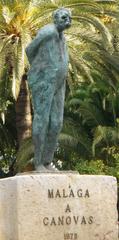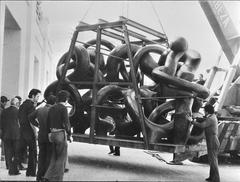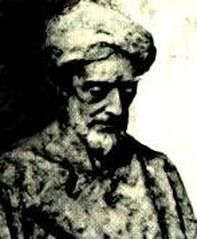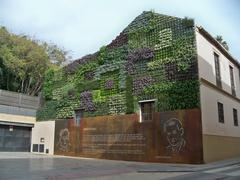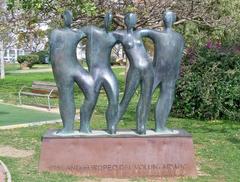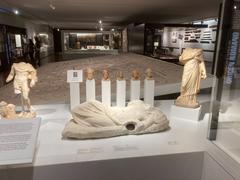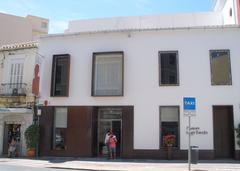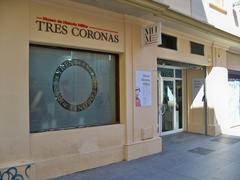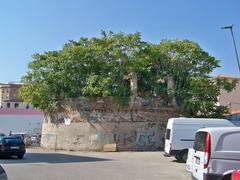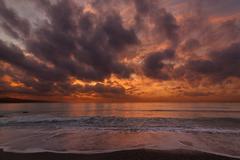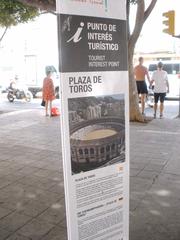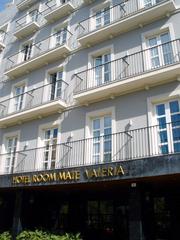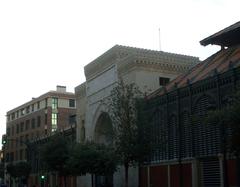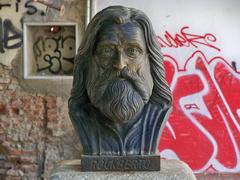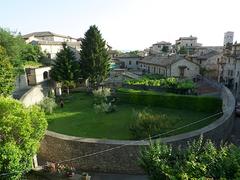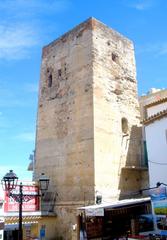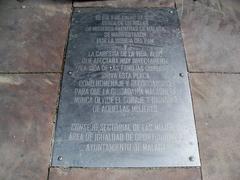Monument To The Conquest Of The Moon, Málaga: Visiting Hours, Tickets & Historical Sites Guide
Date: 03/07/2025
Introduction
Málaga—one of Europe’s oldest cities—seamlessly blends ancient heritage with contemporary culture. Amidst the city’s Moorish fortresses and Roman theatres stands a unique tribute to a global milestone: the Monument To The Conquest Of The Moon. Erected in Parque de la Alegría, this modernist sculpture commemorates the Apollo 11 moon landing of 1969, symbolizing humanity’s unyielding spirit of exploration and Málaga’s embrace of both history and progress. This guide details everything you need to know about visiting the monument, its artistic features, accessibility, nearby attractions, and its role within Málaga’s vibrant cultural landscape. (History of Málaga, Ayuntamiento de Málaga, Wonderstays)
Table of Contents
- Historical Background of Málaga
- Context and Symbolism of the Monument
- Artistic and Architectural Features
- Visiting Hours, Tickets, and Accessibility
- Nearby Attractions
- Cultural Insights and Community Engagement
- Visitor Tips
- Frequently Asked Questions (FAQ)
- Summary & Recommendations
- References
Historical Background of Málaga
Founded by Phoenicians around 770 BC, Málaga’s strategic Mediterranean location made it a crossroads for Carthaginians, Romans, Visigoths, Moors, and eventually the Catholic Monarchs. Each era left indelible marks on the city’s architecture and culture:
- Under Islamic rule, Málaga flourished as Mālaqa, renowned for its fortifications and gardens. (History of Málaga)
- The 1487 Siege of Málaga was a pivotal Reconquista event, leading to the city’s integration into Christian Spain and significant demographic and cultural shifts. (Siege of Málaga (1487))
This deep historical layering sets the stage for Málaga’s embrace of modern commemorations alongside its ancient landmarks.
The Monument To The Conquest Of The Moon: Context and Symbolism
Unlike traditional monuments celebrating military or local victories, this monument honors a global achievement: the first moon landing. Built in 1970, it reflects Málaga’s forward-looking identity and engagement with universal milestones. It serves as a bridge between the city’s ancient past and its aspirations for the future, inviting reflection on human innovation and unity.
Artistic and Architectural Features
The monument, primarily constructed from reinforced concrete, rises about 6 meters and is defined by geometric, abstract forms reminiscent of a rocket and the moon’s surface. Its minimalist surfaces and interplay of sharp angles echo the modernist styles of Spanish sculptors such as Eduardo Chillida, while bronze plaques commemorate the Apollo 11 astronauts and the date of the moon landing. (Monumental Architecture, Identity and Memory)
Set on a raised platform within Parque de la Alegría, the monument is surrounded by concentric steps and Mediterranean landscaping, providing both visual harmony and functional gathering space. Discreet lighting highlights its form at night, reinforcing its lunar theme.
Alt text: Modern metallic Monument To The Conquest Of The Moon in Málaga, symbolizing the Apollo 11 landing.
Visiting Hours, Tickets, and Accessibility
- Hours: Open daily from 8:00 AM to 9:00 PM (confirm for seasonal adjustments).
- Tickets: Free public access year-round; no ticket required.
- Guided Tours: Included in some local historical walking tours; inquire at tourist offices or book with local operators.
- Accessibility: Step-free access, paved paths, ramps, tactile paving, accessible restrooms, and multilingual signage. Assistance animals are welcome, and additional help is available upon request. (visita.malaga.eu)
Getting There: Bus lines 3 and 11 serve the park; taxis and nearby parking are available. The monument is a short transit ride from both the city center and major train stations.
Nearby Attractions
Enhance your visit by exploring Málaga’s iconic historical sites, all within easy reach:
- Alcazaba: A Moorish fortress with panoramic views.
- Castillo de Gibralfaro: Medieval castle connected to the Alcazaba.
- Roman Theatre: Ancient ruins at the city’s heart.
- Málaga Cathedral (“La Manquita”): Notable for its unfinished tower.
- Picasso Museum: Celebrating the city’s most famous artist.
For more information, see guides on Málaga historical sites and top things to do in Málaga. (Wonderstays)
Cultural Insights and Community Engagement
The monument’s creation was shaped by local artists and community input, emphasizing collective memory and education. Annual celebrations around the Apollo 11 anniversary include lectures, workshops, and stargazing sessions, fostering cross-generational engagement. The site regularly hosts educational activities, model rocket launches, and astronomy nights, inspiring interest in science and history.
Visitor Tips
- Best Times to Visit: Early mornings or late afternoons for optimal lighting and fewer crowds.
- Photography: Allowed, with especially striking effects at sunrise or sunset. Drones require prior permission.
- Amenities: Shaded seating, restrooms, drinking fountains, and free Wi-Fi are available nearby. The adjacent tourist office offers maps, audio guides, and multilingual assistance.
- Plan Ahead: Check for special events during festivals like Feria de Agosto or Semana Santa, which can enrich your visit. (mylittleworldoftravelling.com)
- Combine Attractions: Include the monument in a broader itinerary with the Alcazaba, Gibralfaro, and Picasso Museum. (thespaintravelguru.com)
Frequently Asked Questions (FAQ)
Q: Is there an entrance fee?
A: No, visiting the monument is free.
Q: What are the opening hours?
A: Generally 8:00 AM–9:00 PM; check for seasonal variations.
Q: Is the monument accessible for visitors with disabilities?
A: Yes, with ramps, paved paths, tactile guides, and accessible restrooms.
Q: Are guided tours available?
A: Included in some broader city tours; special educational tours may require advance booking.
Q: Can I take photos or use drones?
A: Photography is welcome; drones need authorization.
Q: How do I reach the monument?
A: Take city buses 3 or 11, or use taxis and public parking in Ciudad Jardín.
Summary & Recommendations
The Monument To The Conquest Of The Moon offers a singular blend of global commemoration and local pride—a modernist landmark set amid Málaga’s ancient wonders. Open and accessible to all, the monument is a focal point for reflection, cultural exchange, and community events. For a rich experience, combine your visit with Málaga’s other historical treasures, and use official city resources and the Audiala app for the latest updates and guided content.
Plan your visit today to explore Málaga’s unique blend of history, art, and innovation—and be inspired by a monument that celebrates both the city’s legacy and humanity’s enduring quest for discovery.
References
- History of Málaga
- Siege of Málaga (1487)
- Ayuntamiento de Málaga
- Monumental Architecture, Identity and Memory
- Wonderstays
- Guidetomalaga
- visita.malaga.eu
- mylittleworldoftravelling.com
- thespaintravelguru.com
